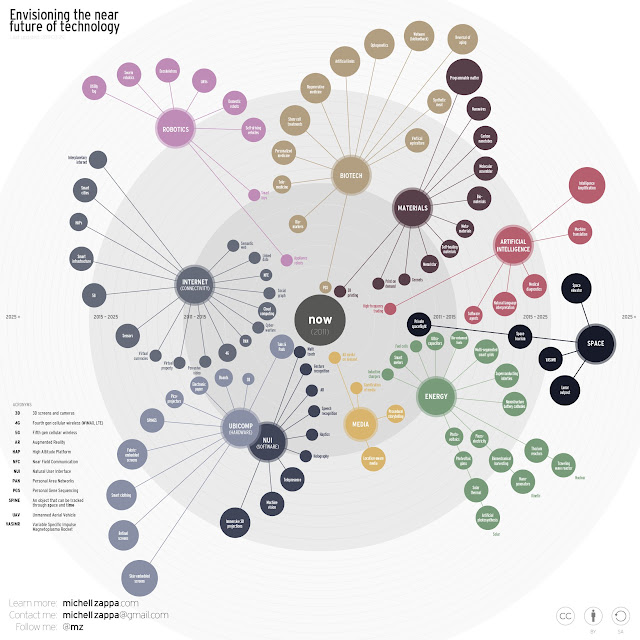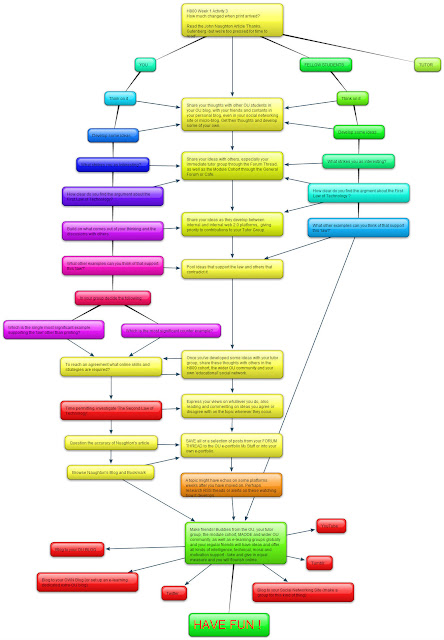In her chapter, Conole argues that a number of catalytic triggers can be identified in terms of the impact of technology on organisations.
Is this your experience?
That the catalytic triggers themselves influence the outcome?
If a problem or problems are the catalyst then yes the nature of and the implementation itself ought to be in direct correlation. However it is often the case that technologies, indeed innovations, go looking for a problem to fix or that the possibilities of a technology cast a shadow on current practice oblinging change.
Eddison did it both ways, solving problems but also trying to foist gadgets on people, both routes having to find their way to success or failure.
This discounts the impact of people, personalities or champions, CEOs and business owners who will carry the day sticking with or tearing out old technologies seemingly on a whim to replace something.
Can you think of examples of when technologies have had a radical impact on your own practice - either personally or professionally?
Over 25 years I have seen TV production change from big teams with office support to teams of one doing it all themselves, from the introduction of wordprocessing and spreadsheets, to the shift from tape or film to digital, from unionised crews and roles in both the UK and France, to a kind of D.I.Y. TV.
What do you think are some of the key barriers to the uptake of new technologies?
Cost, people, time, disruption, training, transition. From your own experience, can you think of change processes you have been involved with - a new technical system, restructuring of your department, a change in job functionality?
There's a new phone system going in now where the call comes through the PC and calls are taken using a headset or handset. How was the change process managed? A hint at what was coming, followed by decisions on the choices regarding the handset or headset then a whirlwind of activity on coming in Monday morning to find new phones that are so light to handle it's as if they're made of card. A team of eager and helpful people, some strangers, some regulars from the IT department, buzzed about. There has yet to be training on the newsoftware, but I suspect that it is intuative and 'just happens.'
(A few hours later my laptop starts talking to me. I realise it is a supplier. I hastlily plug in the headset. Moments later, by default I find through OUTLOOK I have called someone and leave a message).
Intuitive? Seems so.
What was the impact on individuals?
Acceptance, interest, more for our fingers to do, a step away from having video, an abundance of technical possibility that will trip us up. I'm starting to wonder if having filled our day with kit that means we are on call every moment of the day, carrying the office about with us and now doing two things simultaneously, taking calls while completing spreadsheets, for example.
What was the impact on day-to-day operations?
In this instance it has been fairly seemless, however, we were temporarily tripped up with the wi-fi going down and calls going to the wrong phones. Are calls, like emails, going to be recorded and logged?
Thus adding to the volume of email?
As Mayes, Puttnam and others have argued, education seems to have been slower than other industries in embracing the potential of technologies. Can you think of reasons why this might be the case?
We're dealing with cohorts of people coming through the gates (whether virtual or real, online or campus based learning) not components from China to be assembled. Education has a history of making radical shifts in both practice and use of technology and getting it wrong, which would impact on a generation, year group or cohort going through. I am struck how much that is 'teaching' is a highly human activity, that between student and teacher, not simply between people and course materials.
The person who can learn in isolation is the exception. Whilst e-learning promises so much, my fear is that a significant promise perceived by some is to make money. Whilst accepting the need for funding, education should be run as a business too, the idea that a 'quick buck' can be made by sticking modules online and taking payment up front will lead to many disappointments and poor retention.
Old ways, even if dressed in new clothes, such as pastorlal care and one-to-one guidance is just as necessary, perhaps more so for part-time and distance learners who have significantly more impacts on their day than the 'captive' campus-based student.
Is there anything significantly different about the nature or culture of education that has had an impact?
Hopefully the globalisation of education, made possible by the Internet and suppliers able to serve international audiences, the Western model of education will be diluted, infused with other practices and improved as a consequence. Despite Web 2.0 and its promise of participation and experiential learning we are still bound often to practices of the last 500 years; I would say that I am largely 'reading' for a degree, what is more, the assessment process is equally anachronistic, as it is based on assignments and papers being submitted so that markers can do just as they would have done had I been closed into an examination hall for 3 hours each time.
Do you think this is also true for Web 2.0 technologies?
We do as we have always done and become habitualised by it. Taking notes, writing essays, revision and testing follows an old pattern that never suited or was appropriate to everyone. Web 2.0 allows you to study with a crowd, to turn to fellow students, alumni, anyone online (even different institutions where they are putting content out in Open Form). Those of us already embedded in these technologies and practices expect to see it as we study and work, to have conversations 'on the record' all the time, to capture thoughts and ideas from the digital wind and allocate them a place in our burgeoning knowledge banks.
Do you think that the hype about Web 2.0 tools is justified?
Neither hype, nor those who decry the potential should be given credence unless one is used to balance the other. All that should count is the empircal evidence that in a snapshot of time states the positon. From such studies, repeated, and longitudinal, it becomes feasible that we can see trends and plan/act accordingly.
Do you think there is any evidence yet that Web 2.0 tools are having a significant and increasing impact on how teachers teach and learners learn?
Very much so. At times, from my experience, course materials are the jumping off spot, a catalyst and guide rather than an absolute. I will often seek out what an author thinks or says now, rather than relying on 'frozen' papers and texts that were assembled for a virtual box of books some years before. If conversations dry up or don't pick up in tutor or other groups I will decamp to a subject specific social network group.
Are we on another 'groundhog day' cycle or is there something significantly different this time?
There is something different that in some respects is a huge loop back thousands of years where like-minds gathered or those eager to learn would listen in then join in. This is made possible by the global reach of the Internet and increasingly affordable, reliable an easy to use kit.
If your conclusion is broadly that each technology is just another cycle of change, with promises not matching reality, is the perspective any different if the lens on this is over a longer time frame?
No and yes. What matters is the perspective of the person behind the lens, their beliefs, knowledge, experience, attitudes, ambitions, influence, power and voice. In other words, has there been a significant change in practice when you take a longer-term, cumulative account of a range of technologies?
It depends, the car caused rapid change, especially for those hit by one.
The Internet feels more like the air we breathe, certainly in Western and Developed Nations (if such distinctions even have any validity)
i.e. Incidents can't be so readily isolated.




